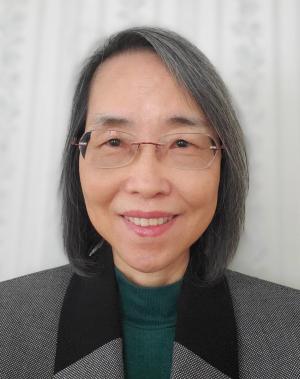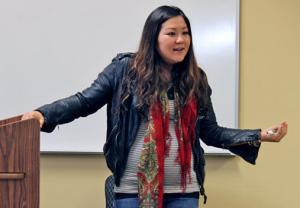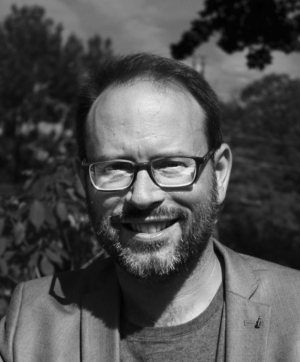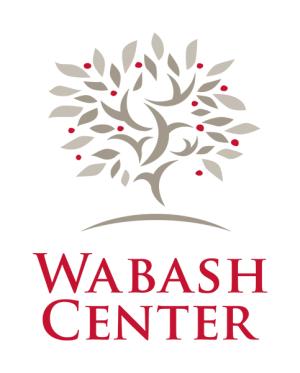Resources

As a toddler, the Grammy-winning musician esperanza spalding heard Yo-Yo Ma play cello on Mister Roger’s Neighborhood and decided she wanted to play music like that. In an interview, she said it was Ma’s “total body activism during the music” that captivated her. A jazz-bassist, vocalist, and composer, esperanza moves with her music, which defies genres, and hopes to create a physical experience of resonance in her audience. As a professor of practice at Harvard, she hosts jam sessions at the studio at Harvard’s ArtLab so that participants can improvise and make music together. In her heart, she wants to be someone in “deep co-learning” with her students. How can our classrooms be spaces of co-learning that welcome creativity, collaboration, and even improvisation? How can we recognize the body as a valuable site of learning, so that the knowledge we gain would not be over our heads, but would speak to and touch our innermost yearning and desires? If this is difficult to do in an in-person classroom, is there any hope for online teaching via Zoom? Last spring, I taught an online course on Spirituality for the Contemporary World for Master students and community learners. I have learned so much about embodied teaching and learning: guided meditation, listening to music and poetry, art appreciation, rituals, Tai Chi, cross-cultural discussion, and much more. I want to reflect on a few memorable moments from the class. I invited Professor Cláudio Carvalhaes to speak on “The Pandemic and the Re-imagination of Rituals” because I knew him to be a creative teacher, preacher, and liturgist. Carvalhaes discussed the relation of ritual to our body and earth. He shared his experiences of leading workshops on liturgies on four continents of the world, which led to the book Liturgies from Below. At a time of crisis, he said, it is important to draw from the experiences of the community to craft liturgies and prayers that respond to the people’s needs. At the end of the presentation, he invited students to offer prayers with the movements of their bodies. He explained what he was going to do and invited students to warm up by standing, shaking loose, moving from side to side, and turning around. He demonstrated how to do these to ease the students. Then he picked up his guitar and sang four stanzas of a song. As he sang the first stanza on happiness and thanksgiving, he invited students to move to embody memories of happiness and joy. Similarly, he sang the second stanza on sadness and the third one on anxiety and invited students to imagine movements to express them. In the final stanza, he closed by asking God to hear our prayers, which were all in our bodies. During the pandemic, feelings of grief, helplessness, and uncertainty are stored in our bodies, as the book The Body Keeps the Score says. Acknowledging these feelings through movements of prayers helped us to connect with these emotions. Doing this together made us feel less alone. Students appreciated the time with Carvalhaes as they were given the freedom to experience the power of ritualizing through their embodied selves in their own ways. I also invited Episcopal priest and artist the Rev. Susan Taylor to lead a class on spirituality and art. Some years ago, I invited her to speak in my class in person and she brought a lot of art supplies with her. She wanted us to try out and create a collective art project at the end and the process was inspiring. This time, I told her, the class was online and I would appreciate it if she could include doing art in the class. She told me to ask students to have their art supplies, such as painting and drawing mediums, brushes, pieces of paper, color, palette knives, etc., on hand. She made a presentation on how arts help individuals and churches during a time of pandemic and strengthen our relationship with God. She shared photos of her art and included a detailed explanation of the process of working through a 7’x 6’ painting entitled “Skyflowers.” Introducing the process of how we would make art together, she offered a lot of encouragement for us to explore and tune out the self-judgmental voice. On Zoom, we could see her painting in her studio, adding shades and layers of colors to her work. We spent some time creating our own art and afterward we shared our experience of making art and what this meant to us. We also discussed how to include art in our own spiritual life and ministries. The brief moment of creating art transformed us from spectators to participants. It was wonderful to see students trying to express themselves in new ways and hear what art evoked in them. Since the class met for an hour and a half in the evening, I decided to teach Tai Chi movements for several minutes in the middle of each class. I began by teaching simple Tai Chi exercises so students could understand the principle of balancing Yin and Yang in the movements. I also posted a video from YouTube so that they could follow the exercises if they wanted to practice more. After we practiced these exercises in several classes, I was able to teach them several Tai Chi movements by breaking down the steps. Even though we practiced only a few minutes in class, a student was motivated to learn further about the practice of Tai Chi. We easily succumb to Zoom fatigue in online classes when teaching is didactic, usually with a PowerPoint presentation, and students become passive onlookers. But there are many ways to expand the possibilities of sensory experiences, even in a Zoom meeting. esperanza spalding invites us to think about teaching as embodied adventures. I have been stretched and learned so much from my co-learners.

(Part Five of a Five Part Serialized Blog) Art is a midwife of transformation and transmutation. Art transforms us through our encounter with it, both in the world and out of our hearts and hands. Art also transmutes what we’ve created into something meaningful and powerful for people other than ourselves. How many times have we written something, taught something, shared something, only to hear our students share with us that they received and heard something we would never have guessed? A midwife helps to bring forth new life, but soon afterward, the midwife departs, and it is our responsibility to nurture and care for that new and sacred life. Something I can’t quite name occurred in this class, and I don’t know if there is a map or a listicle that can help me or you recreate it. Perhaps the beginning of the map emerges from the questions I began to pose in the midst of the chaos and death of 2020. Is what I’m teaching, what I’m asking students to internalize and wrestle with, speaking forward into our futures? Whose futures? Is what I’m teaching meeting the needs—embodied, individual, and communal—that are making themselves known in the classroom? Or is my teaching, my agenda, burying those needs, diminishing what is being excavated and surfaced in student’s lives and in mine? Are participants, including myself, having to disengage with their innermost needs, their generational needs, to “learn”? I don’t know if I’ll ever teach the Spirituality and the Arts class again. It was suspended time. A unique experience that I am still processing and trying to understand. I am transformed by it. I will never see my students the same way again. The way they taught one another and me out of the wealth of their experiences, through what their heart and hands made, astounded me. Teaching art as theology and spirituality was a remarkable pivot from the face-to-face classroom and from the online classroom space that I had learned to carefully curate over the years. Centering art and art making as teacher felt like liminal space where the conditions, needs, questions, and urgency of the moment converged to build something that maybe couldn’t or shouldn’t be repeated. In many ways, this course took more out of me than any other class I’ve ever taught. It was also the pivot each of us needed in teaching and learning in theological education for these times. The course was a shift into the now and the immediacy of our collective consciousness and bodies moving through painful and joyful times together. The class was a shift into thinking beyond isolation, beyond death and death-dealing, into growing and truth telling. Art, both the process of making and sharing what we made, midwifed our anger, sorrow, grief, and joy in ways that a traditional course might not have made possible. It felt raw and holy. As a spiritual practice, our time together learning about the connection between art, spirituality, and theology became a collective prayer in many voices, uttering both similar and dissonant cries, chaotic and beautiful at the same time. We are each still discovering the ways in which the course, now complete, is ushering forth transformation and transmutation in our lives and being. And yes, everyone received an “A,” whatever that means now.

When I go to work in the morning, the first thing I do is read the Bible. I read a bunch of commentaries, take a bunch of notes, then prayerfully reflect on the text. Then I set to work coming up with a meaningful and compelling way of communicating my interpretation to my listeners. Then I lift the piano lid. You see, I’m a composer of sacred music. At its heart, my job is to present an interpretation of Scripture to my listeners in a way that is interesting, convincing, and spiritually valuable. Unfortunately, few Christians ever hear my sacred music. That’s because I don’t write choral anthems or praise songs. I write sacred concert music: classical works that responds to themes, ideas, and texts from the Christian tradition. I’ve written a piano trio inspired by the book of Job, a song cycle that sets Rilke poems, and a brass quintet that explores the concept of perichoresis. (Humblebrag: of this piece, Walter Brueggemann wrote to me: “I am not a great theologian but have pondered “perichoresis” for a long time. This is the finest exposition of that thick idea that I have encountered.” Be still my beating heart!) Now, if I wrote a lot of choral music, I wouldn’t be complaining nearly as much. But today, most of history’s great church music composers face the same problems as me. While we do hear choral works by Bach, Handel, and Mendelssohn occasionally on Sunday mornings, the place where we usually encounter their sacred music is in the concert hall. This is an example of a strange irony: though most of us have nearly unlimited access to the corpus of great sacred music–either live or on Spotify-we Christians rarely have the chance to intentionally explore its spiritual value in the context of Christian community. As a result, we are missing out on the many ways sacred music can contribute to our lives as Christians–beyond its role in worship. In this post I’d like to provide a case study of a way that a different approach to sacred music can contribute to our work as educators. First, take about 15 minutes to listen to three new musical settings of Psalm 148 (scroll down for texts and info about each setting). Each was written in 2019 by a contemporary composer representing a different Christian tradition: Roman Catholic, Evangelical Lutheran, and Armenian Apostolic. Now that you’ve listened, let me ask you a question: which of these pieces interpreted the psalm correctly? Obviously, this is not the right question to ask. Yet it’s a familiar one, as it’s the one that so many students initially bring to the task of Biblical interpretation. And as educators, we know that ridding a student of this hermeneutic habit is the very first thing we need to accomplish in our classes. Listening to these three musical settings makes this easy. Each piece is an authentic, honest, and personal response to a rich and mysterious text. Each provokes us to think about the psalm in a completely different way: not just encouraging us to provide different interpretations of the psalm, but to ask completely different kinds of questions about it–and of ourselves. Heard back-to-back, the three settings testify incontrovertibly to the possibility–and, I might add, the necessity–of complementary, mutually-enriching interpretations of the same text. If we are going to teach the next generation of pastors, theologian, and laypeople, we know that these are the attitudes toward Scripture that we need to promote. More than anything, we need to convince our students to devote themselves to a lifetime of continuous exploration and re-exploration of our tradition. Beyond that, we need to encourage them to develop an attitude of humility, an awareness of the contingent nature of our own interpretations, and the courage to ask complex questions and follow them where they may lead. Sacred music helps us accomplish these goals. It opens up the field of interpretation by inviting us to engage with the Bible in ways that are not ideological, simplistic, or narrow, but instead subjective, affective, and open-ended. But this can only happen if we think creatively about new ways to use it in our classrooms and our churches. My new organization Deus Ex Musica, which developed the project culminating in the videos you watched, is my own humble attempt. For more than a millennium, composers have given us unique, powerful, and provocative musical interpretations of Scripture. They continue to do so today. In a world that increasingly promotes simple, ideologically-driven solutions to problems, I think sacred music has the potential to remind us that our tradition is rich, mysterious, and resistant to easy answers. Whether you are an educator, pastor, or layperson, I encourage you to seek out opportunities to explore the ways it can contribute to your ministry and your life of faith. Thanks for listening!

“Listen to my words, YHWH, consider my lament. Hear my cry for help...” (Psalm 5:1-2) We are living in unprecedented times. Not only are we still reeling from the global COVID-19 pandemic, but nationally we are just beginning to reckon with the current social uprising in response to police brutality and systemic racism. People throughout the world are crying out, raising their voices in protest and lament, seeking hope and solace. In so doing, we join the voices of generations past, who sought authentic and creative ways to express their deepest yearnings, turning to their spiritual and cultural traditions for guidance and inspiration. Ten weeks ago, the two of us—one rabbi and one minister—decided that we wanted to explore the biblical Book of Psalms—a collection of beautiful, gritty, desperate, and uplifting prayer-poems—in our time and place. And so, we conceived PsalmSeason: An Online Encounter with the Wisdom of the Psalms. Over the course of the 18-week cycle (the numerical equivalent of the Hebrew word for life—chai), a diverse group of religious leaders; cultural critics; musicians; poets; artists; and activists explore the Psalms, bringing these time-worn texts into dialogue with life in the here-and-now. Like the ancient Hebrew writers, we seek to express our anger, dread, and sorrow, while also giving thanks for the preciousness of life and recommitting ourselves to actively work for a more just, compassionate, and sustainable future. Why is it that so many people have turned to the Psalms over the centuries, particularly in difficult moments? In her elegant introduction to PsalmSeason, Dr. Ellen Davis of Duke University writes that one feature of this biblical book that makes it so compelling is that “the Psalms speak directly from and to the human heart.” Further, as Davis notes, “The book of 150 Psalms speaks with the most consistently personal voice in the Bible, often in the first person (‘I’ or ‘we’).” These ancient Hebrew poets model for us the power of calling out to God, to ourselves, and to our communities in different—often extreme—moments of life. While it is true that for centuries Jews and Christians have turned to the Book of Psalms, there have been far fewer opportunities for members of these two communities and others to explore these sources together as fellow seekers. What do we share in common? Where do we differ? How might reading these texts through the lens of the “other” impact our understanding of life and our struggles at this time? What do we hear, for example, when listening to the poet Drew Drake’s new lament “Searching My Rage,” which he wrote just days after the murder of George Floyd at the hands of police officers? What do we see when looking at Debra Band’s illuminated painting of the pastoral landscape of Psalm 23? How might the words of Nina Simone’s psalm-like song “Come Ye,” performed by Sweet Honey in the Rock, inspire us with its repeated refrain of “Come ye of hope”? Throughout the PsalmSeason cycle, we focus on one psalm a week, offering several different forms of commentary—music, poetry, personal reflection, and visual art. In addition, we offer broader reflections on major themes in the Psalms or significant cultural creations inspired by these legendary texts. We also host live events on topics related to the Psalms. We are tremendously grateful to the more than 50 contributors from several different countries that have lent their talents and skills to this project, particularly during such a difficult and precarious moment in human history. We invite all who visit the PsalmSeason website (hosted on the Interfaith Youth Core’s Interfaith America site) to consider taking three simple actions: Reflect quietly on the biblical texts and interpretations offered on our site. What are they key insights or questions that emerge for you as you read today? Share your insights and questions with at least one other person. Who might be a helpful companion on this journey? Who might benefit from such a conversation? Create your own commentary on the PsalmSeason materials you explore, be it in the form of poetry, music, dance, or drama. How might this process help you grow as an individual and contribute more deeply to a world in dire need of healing? Please share your experiences on Twitter using #PsalmSeason and tagging us—@millercenterHC and @ifyc—or in a post on our Facebook page. To paraphrase Psalm 90: may the work of all those working for peace and justice, health and wholeness, be blessed.